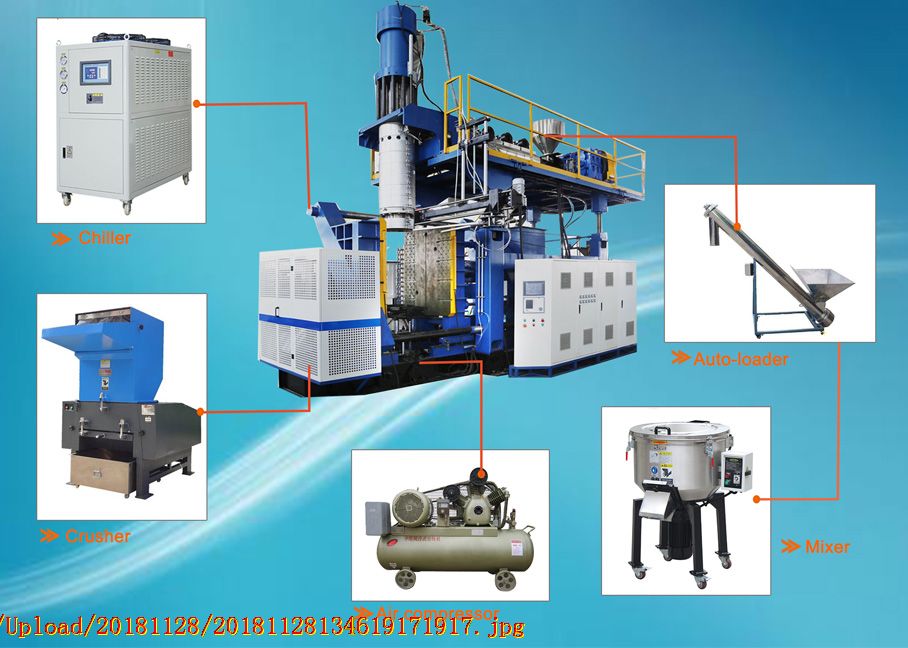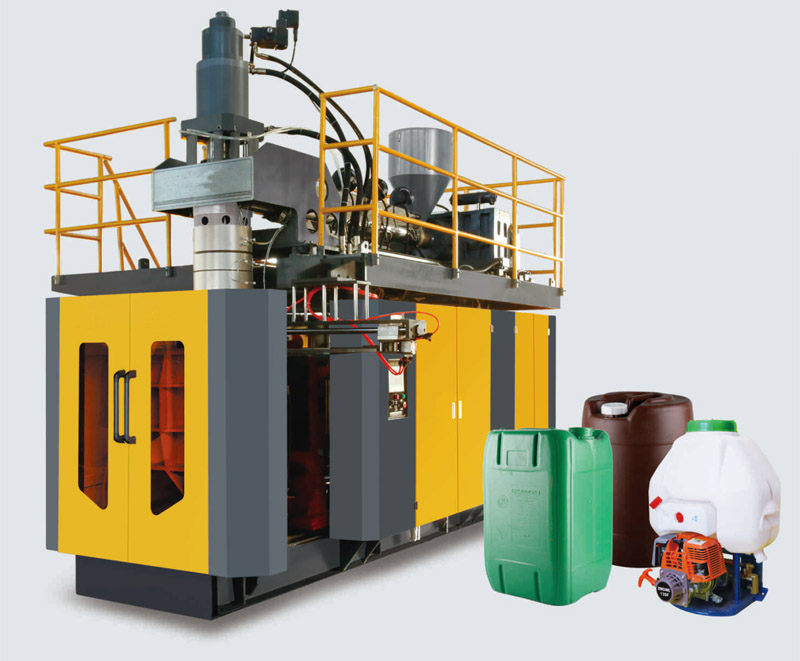
The hollow blow molding machine is used to produce hollow products mainly made of HDPE plastic materials, such as oil drums, chemical drums, pesticide bottles and other special-shaped parts. How to properly use and maintain the hollow blow molding machine to extend its life?


Inspection of extrusion blow molding machine assembly If it is a newly purchased extrusion blow molding hollow molding unit, the machine assembly inspection should be carried out. After the equipment is installed according to the requirements of the manual, the entire unit should be calibrated, including the alignment of the extruder head and the clamping device; install the mold water cooling pipe and check whether the direction is correct; the operator and the control device (electrical control box, Programmable controller, operation keyboard, etc.) is it convenient to operate; whether the feeding, placement of finished products, and the recycling process of waste products are smooth without affecting normal operation, and whether the location of related auxiliary equipment is appropriate, etc. Only after the inspection results of the equipment assembly meet the production and safety requirements, the equipment is in the best assembled state.
2. Inspection of hydraulic and lubrication system check the hydraulic oil level gauge of the extrusion blow molding machine and each hydraulic device to keep the oil volume of the oil tank above the reference oil level.
3. The preparations before starting up are as follows. 1) The materials used in the extrusion blow molding machine should meet the required drying requirements, and further drying is required if necessary.
1) The materials used in the extrusion blow molding machine should meet the required drying requirements, and further drying is required if necessary.
2) Select the specifications of the machine head according to the product type and size, and install the machine head in the following order: install the machine head flange, mold body, die, perforated plate and filter screen.
3) Connect the compressed air pipe, install the core mold electric heating rod and the head heating ring. Check and turn on the water system. Adjust the gap between all parts of the die to be even, and check whether the center line of the main machine and the auxiliary machine are aligned.
4) Start the extruder, mold clamping device, manipulator and other operating equipment, and perform no-load operation, check whether each safety emergency device is operating normally, and remove the fault in time.
5) According to the provisions of the process conditions, set the temperature of the extrusion blow molding machine head and each heating section and perform heating section by section, and test the integrity of each heating section with scraps, check whether there is no heating phenomenon; wait for the temperature of each part to reach Constant temperature ~ 1h after setting the temperature.
6) On the programmable controller, set the thickness of the parison wall at each point according to the process regulations.
7) Generally, the outer layer should be opened first to prevent the material from flowing back from the outer layer due to excessive pressure after the inner layer is opened. The frequency of the feeding flow is increased step by step from small to large to prevent the opening frequency from being too large, causing the screw and screw to be damaged due to low temperature.
8) Process conditions:
a. The process temperature should be controlled within the range of 170-230℃ when raw materials are plasticized and melted.
b. The inflation ratio of the blank tube blow-molded bottle products is controlled within the range of -3):1.
c. The compressed air pressure for inflating the blank tube to form bottle products is ~.
d. The mold temperature for forming the bottle is 20-50℃, and the cooling setting time accounts for about 50% to 60% of the total production cycle time of the product.